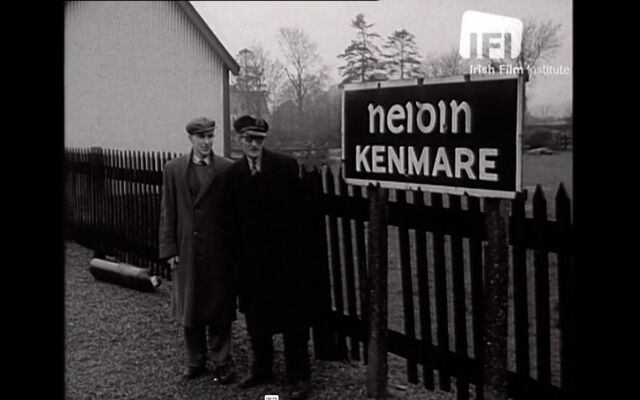"Kenmare's Last Train," an Irish language newsreel from 1960, is now available to stream for free on the Irish Film Institute's IFI Archive Player.
On the 1st of February 1960, Kenmare locals and railway workers looked on as the last train made its final journey on the tracks before the line closed.
These trains were quite slow by modern standards but acted as a faster more efficient method of travel compared to a horse and cart.
However, due to significant loses, CIE was forced to close the lines and replace the train service with a new bus route.
It was the end of an era for the community and especially poignant for station master, Proinsias Ó Briain, who had worked there for over 40 years. Constructed in 1893, the railway line serviced the area from Kenmare to Headford and was one of six other lines that had been forced to close within the space of a month.
In the 1950s and ‘60s, large numbers of rural railway routes closed down due to high operating and maintenance costs. Many of the original tracks still exist, abandoned in the rural Irish landscape.
It was not until the 1990s that Ireland would see a revival in the rail industry due to a population boom and newly thriving economy, famously known as the ‘Celtic Tiger.'
"Kenmare's Last Train" is part of the Irish Film Institute's Gael Linn Collection.
The Irish Film Institute's Gael Linn Collection
Gael Linn was established in 1953 to promote Irish language and culture. Co-founder and first manager, Riobard Mac Góráin, immediately realised the importance of promoting the language through entertainment and popular media. Gael Linn’s initial foray into production was the first regular indigenous cinema newsreel since the Irish Events series of the 1920s.
In 1955, Ernest Blythe, Chairman of Comdhail Naisiunta na Gaelige, lent Gael Linn £100 to produce a short film for cinema, and the Amharc Éireann (A View of Ireland) newsreel was born.
From 1956 to mid-1957, Amharc Éireann consisted of short, single-story items that were distributed to cinemas throughout the country on a monthly basis. Their popularity was immediate and by mid-1957 the Rank Film Distributors agreed to supply them to Irish cinemas along with their own newsreel, at which point they became issued on a fortnightly basis.
By 1959, the success of this home-grown newsreel resulted in it being produced weekly and it expanded to include four separate news stories. The series continued until 1964 when the immediacy of television as a means of relaying news to the Irish population rendered the newsreel obsolete.
Produced by Colm O’Laoghaire, a total of 267 editions of Amharc Éireann were made.
Although Gael Linn’s Amharc Éireann production ceased in late 1964, its influence is ongoing. The range of Irish interest subjects covered (from hard news stories to more magazine-like items) provides a vivid window into the development of modern Ireland at a particularly progressive point in its development and provides a first-hand insight into the moral, cultural and economic development of the country throughout the Whittaker and Lemass eras.
"Kenmare's Last Train" is published here thanks to the Irish Film Institute (IFI), who IrishCentral has partnered up with to bring you a taste of what their remarkable collection entails. You can find all IrishCentral articles and videos from the IFI here.
To watch more historic Irish footage, visit the IFI Archive Player, the Irish Film Institute’s virtual viewing room that provides audiences around the globe free, instant access to Irish heritage preserved in the IFI Irish Film Archive. Irish Culture from the last century is reflected through documentaries, animation, adverts, amateur footage, feature films, and much more. You can also download the IFI Archive Player App for free on iPhone, Android, Apple TV, Amazon Fire TV, and Roku.
IrishCentral has partnered up with the IFI to bring you a taste of what their remarkable collections entail. You can find all IrishCentral articles and videos from the IFI here.



